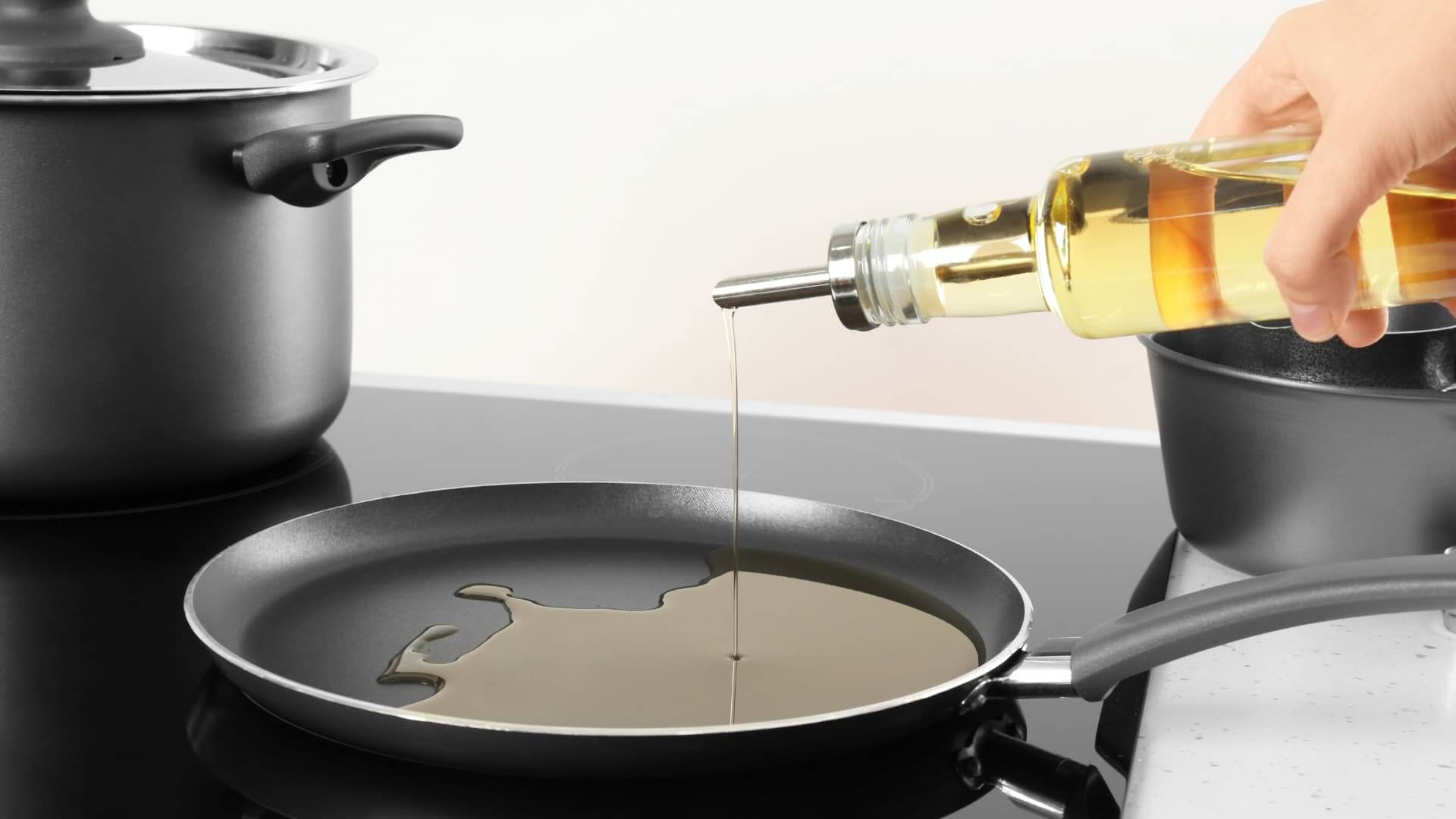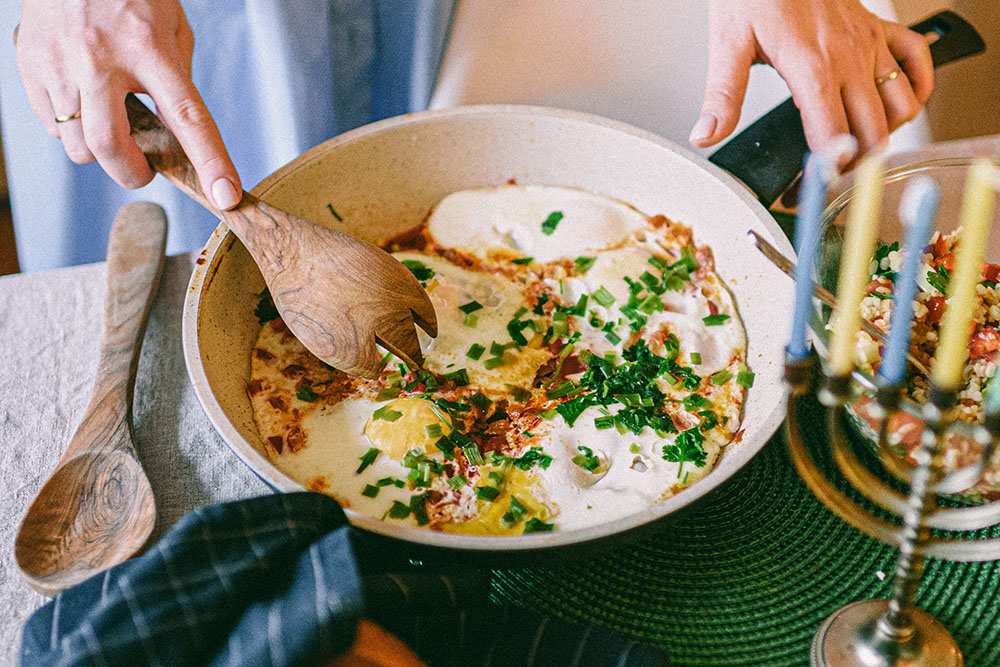Stainless steel pans are adored by professional and home chefs all over the world. Their gleaming outlook, sturdiness, non-toxic features, and high heat endurance make them stand out from other cookware.
Imagine cooking in a stainless steel pan that is non-stick and non-toxic; sounds like a dream, right? If you want to know how to season a stainless steel pan, stick with me!
Because let’s face it, their non-stick performance is not quite impressive. And while cooking stick-prone food such as eggs or fish etc., things can get quite sticky.
But it doesn’t have to be that way. There is a way to make your stainless steel cookware non-stick by seasoning it properly. It is an easy and straightforward process that can transform your cooking experience quite pleasantly.

How To Season a Stainless Steel Pan: 5 Steps
1. Clean The Pan
First and foremost, you cannot season a dirty pan. Your pan should be oil, dust, and food-free. A clean pan will get seasoned nicely because you want the oil to season the pan’s surface and not the residue.
Clean the pan with hot, soapy water. You can use a scrub brush if there is food stuck to your pan. Remember, you don’t need to wash the pan with soap after seasoning at all.
2. Oil It Up
The next step is to oil the pan. For seasoning, it is best to use oils that have a high smoke point. But more on that later!
Start by putting a generous amount of oil in the pan and spin the oil around the pan to make sure that it is spread evenly across the surface. You need to coat the sides as well. Use a paper towel to nicely spread the oil and make sure everything is oiled.
3. Heat It Up
After oiling the pan, you need to heat it. There are two methods to go about this. You can heat the pan in:
- Oven
- Stovetop
The oven method is a bit easier than the stovetop method because all you need to do is stick the pan in the oven. Preheat the oven to 350°F and leave it for an hour or until the oil begins smoking.
However, the stovetop method is faster. Just put the pan on a flame and let the oil smoke. All this will take 5 minutes tops.
4. Let It Sit
The pan will be smoking hot so let it sit for a while until it reaches a comfortable temperature for you to handle.
5. Time To Wipe
Use a pile of paper towels to soak up the excess oil. You don’t need to get rid of all the oil, though. Make sure the pan is evenly coated with oil when you are done wiping the surface.
Tadaaaa!! Your stainless steel pan is now seasoned and ready to use.
An important thing to remember is not to scrub the pan when you are done seasoning it. A paper towel is enough to soak up the residue oil, or you can just simply rinse it if need be.
You need to re-season the pan when you notice grease and oil build-up. Clean it thoroughly with a brush and soap and repeat the process all over again.
Cook Anything You Want
Your non-stick stainless steel pan is now ready for your next cooking adventure. Seasoning makes all the difference, and you will notice how food slides right off the pan and doesn’t stick to the pan at all.
Is Seasoning a Stainless Steel Pan Necessary?
It is not mandatory to season your stainless steel pan. However, for new chefs managing the right temperature while cooking can be tricky, so seasoning the pan can help.
By seasoning the pan, you are increasing its non-stick efficiency and heat distribution. Cooking in stainless steel pots is all about managing the heat. For stainless steel pans, it is recommended to cook on medium or low heat.
By seasoning the pans, the pores in the metal are filled up with oil. When the pores are coated nicely, it helps create a nonstick surface. Most people complain about the food being stuck to stainless steel, so seasoning the pan is ideal for an easy clean-up and to avoid sticky food.
All in all, there is really no harm in seasoning the pan. You can do it yourself and check out if it works for you.
What Are The Best Oils To Season a Stainless Steel Pan?
As I mentioned earlier, you cannot use just any oil to season your stainless steel pan. You need oil with a high smoke point because low smoke point oils cannot do the job efficiently.
Here is the list of oil that is recommended to use for seasoning:
Grapeseed oil is highly suitable for seasoning, thanks to its high smoking point. Moreover, it contains low saturated fats that will help your pan’s surface stay smooth.
Flaxseed oil is another organic option to season your stainless steel pans. Although it has a low smoke point, it is food-safe oil that dries naturally. A downside to this oil is that it is costly and has a strong odor.
Olive oil is the favorite oil for many people. However, it is not suitable for seasoning because of its low smoke point.
Tips To Cook In A Stainless Steel Pan (Non-Stick Way)
Stainless steel is usually hard to manage especially if you are a novice chef. But that’s okay. By following some simple steps, you can cook like a pro!
- Put the pan on the stove and let it heat up for 2-3 minutes. Once the pan is heated, you can add the oil.
- It’s time for a TSS test. In this test, you drop a tiny bit of food in the oil and if you hear the TSS sound, your pan is all set.
- Avoid putting cold food in the pan because it is prone to sticking. Always bring the meat and veggies to room temperature before cooking in the stainless pan.
- By taking care of your stainless steel pans, you can enhance their efficiency and life. Wipeout any residue or food with a paper towel while the pan is warm. Put 1 cup of hot water in the pan and put it on medium heat. Use a wooden spoon to scrape away the sticky food. Now discard the water and pat dry with a paper towel.






